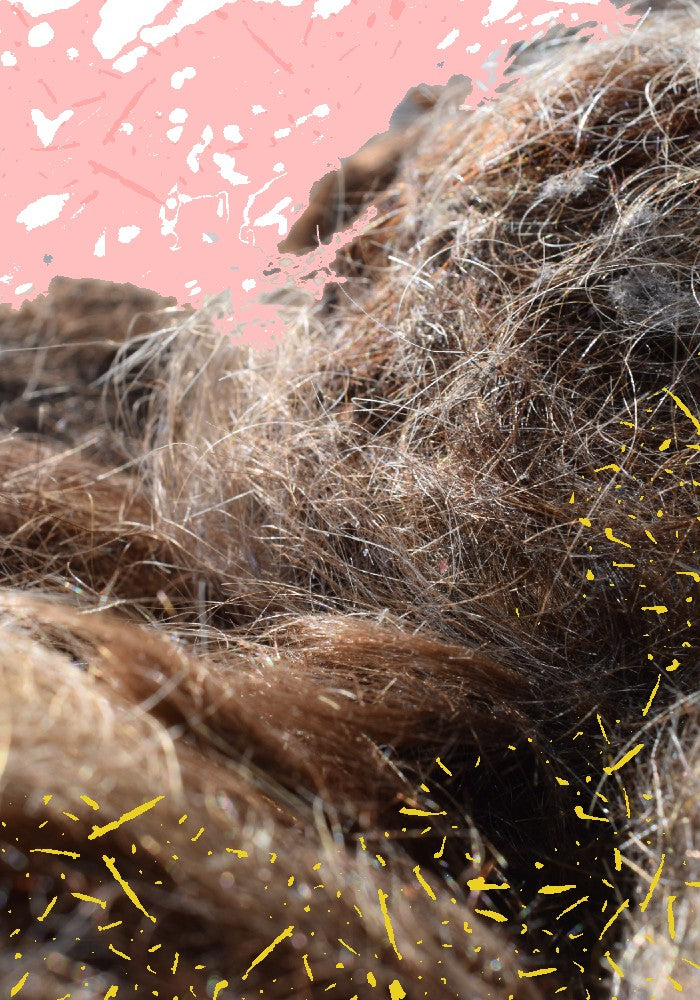
Why we want to stop human hair waste being wasted
We talk about hair waste. A lot. We talk about it with our members, with our partners, with the public, with our friends, with our neighbours. We talk about it all the time because it’s one of our “star” recycling services at Green Salon Collective. We talk about hair waste at almost every single R&D meeting and it’s not just because our research partners are interested in all the unique projects we are developing around hair. It’s often because they don’t see the problem.
“Is human hair waste even an issue?”
Well, yes and no. When you think about areas of low population density, hair waste does not appear obviously problematic. It’s an organic material that probably gets buried in the ground with who knows what else. You could argue that it’s non-hazardous and, although it takes ages to break down, it poses no significant threat in and around rural communities.
In areas of high population density, on the other hand, hair waste can really accumulate. A more obvious hazard is that it can choke drainage systems and wreak havoc on infrastructure. Of course it will also probably pile up with everything else on landfill sites which is never a good thing. We know that even lettuce won’t decompose properly in landfill. Hair is no different.
Okay, you may argue, but that’s not really a pressing problem, not like plastic pollution or the chemicals being poured down salon drains everyday. Someone we respect even said to us once that perhaps incinerating hair waste really is the most economical solution. Admittedly, we don’t agree and here’s why.
Pandora’s locks
We are not necessarily trying to ‘solve a problem’ with hair waste. We are trying to unlock its potential. There can be no doubt that this is an underexploited resource and an abundant one at that. Some experts suggest that the amount of human hair waste generated annually is roughly the same as wool. Considering that the global sheep herd is well over a billion strong, that is an enormous amount of material.
We need to be sure our solutions for this increasing waste stream are as aligned with circular economy principles as possible. Furthermore, we genuinely believe the future is circular and that nothing, not anything, should be sent to landfill. Let’s kill landfill.
On track with a piggyback
Another common concern from people with whom we discuss our hair waste research is around congestion. Collecting this new waste stream will ultimately put more trucks on the road, some have argued. This is a fair assumption. We have all seen the same result with the rise of free next day deliveries which, of course, has also resulted in yet more trucks on the road collecting all those cardboard boxes. Thankfully, this is not the case with GSC hair recycling.
Not everyone sees it but the real star of the show is metal. Not as glitzy as hair, no, but the impact our members have made just by recycling all those sticky, contaminated colour tubes and balls of hair foil has been truly significant.
Unlike hair, metal going to landfill is incredibly problematic. Mining for virgin metals like bauxite for aluminium is especially resource intensive and riddled with issues from deforestation to working conditions. Every gram we can source recycled rather than virgin is a win on so many accounts.
Hair essential piggybacks onto our metal recycling service. It is lightweight by comparison and is almost always collected with salon metal waste. What’s more, we utilise pre-existing courier and logistics systems. Ultimately, the result of our diversion of hair waste is no extra trucks, no added congestion.
Welcome, devil’s advocates
Research and development not only takes time but it requires push back. A so-called devil’s advocate presents alternative perspectives which can be useful for us to consider new angles to the issues we face. This way, we may get to explore solutions we hadn’t considered before. We honestly welcome criticisms and at least partially combative opinions like those just mentioned because they help us to strengthen our work. (And our resolve!)
Barriers and resistance embolden us, so much so that we have invested extensively in R&D. We are already well underway developing projects with other researchers to unlock the true potential of this overlooked resource.


